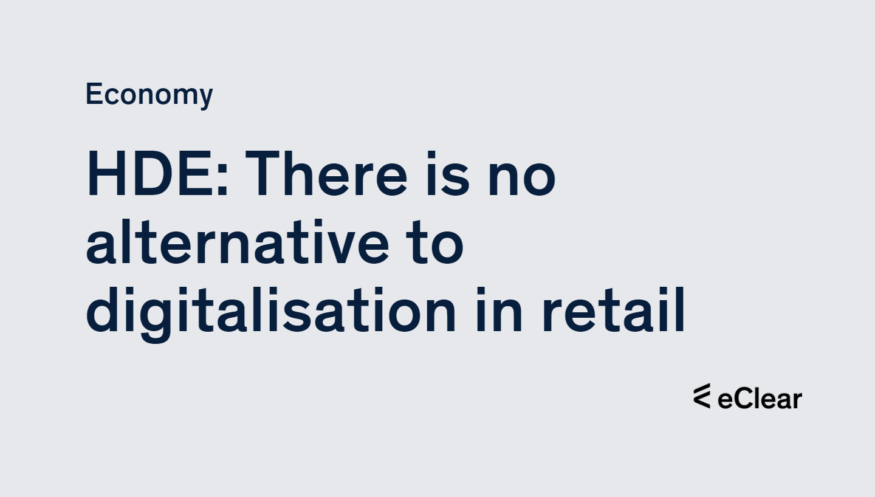In the light of day, not all companies are recovering in the same way – the 2022 Christmas miracle has not yet happened at the 2022 box office. Up to the second Advent, the Christmas business 2022 of the German retail trade has increased somewhat —, nevertheless, expectations were disappointing overall, as announced by the German Retail Association (HDE). “Customers are still clearly reluctant to spend, and the general uncertain situation with high energy prices continues to dampen the mood considerably,” said HDE Managing Director Stefan Genth.
According to HDE statistics, the imbalance in the retail sector has proved to be more challenging than initially hoped: rampant inflation, plus persistent bottlenecks in supply chains, have, in some cases, caused a yawning void in the stationary trade and robbed many companies of their sleep. Finally, the continuing boom in online retailing shows that the answer to retail’s challenges lies in digital solutions.
Ambivalent sales development in stationary retail: the trend towards digitalisation visible
According to the latest HDE 2022 figures, e-commerce is one of the big winners of the past business year, with a 13.3 per cent increase in turnover. On the other hand, the stationary clothing, electronics and furniture trade had to cope with painful declines of up to minus twelve per cent. Under the increasing pressure to adapt, many retailers are adopting a more digital approach to their business in the future.
Digitalisation has gained importance for nine out of ten retailers, according to a study by Bitkom from 2021. 85 per cent of them already sell their goods entirely or at least in parallel to the retail shop on the internet. Having their website, as 98 per cent of sellers already do, is now standard in the industry. The first necessary steps have been taken, but the potential of digital solutions still needs to be exhausted.
B2B platforms: Digital delivery networks ensure efficiency and product diversity
For procurement, in particular, digitalisation offers tangible efficiency and cost benefits. In times of strained supply chains, B2B platforms allow retailers to establish new supply structures with manufacturers from all over Europe. Diversifying manufacturer contacts improves the negotiating position of the individual shop, which can choose more quickly and easily between different offers. The platform approach also allows retailers to react flexibly to the market situation, seasonal peaks in demand and special customer requests. The much lower minimum order values on the B2B platforms reduce the risk of capital bottlenecks and allow a varied product range without long-term purchase commitments.
And the costs of visiting important trade fairs will only be affordable for some retailers in the coming months. Here, too, B2B platforms offer an adequate opportunity to discover new products and to be able to provide their customers with an up-to-date range of products. With the modernisation of goods procurement, many retailers can focus more on their core competencies. This creates new economic freedom to invest in high-quality advice and innovative curation of the on-site shopping experience.
Data as a quality driver: creating added value for customers with AI and data analytics
However, a robust digital infrastructure facilitates daily procurement work. In direct contact with the customer – whether online or physically in the shop – data that is digitally collected and processed plays an increasingly important role in sales success. Virtual reality elements can be integrated into the shop to make shopping a unique experience. The technical possibilities promote inspiration while shopping and ensure lasting memories of the shopping experience.
Artificial intelligence technologies help understand buyers’ customer journey and their wishes. Those who can later serve them with targeted offers increase the chance of a lasting customer relationship. This can be activated anytime via digital communication channels such as newsletters or social media. The better the handling of data is integrated into a holistic ecosystem of the retailer, the more precisely the assortment can be tailored to its added value for the customer. Combined with a broad-based manufacturer network, this is one of the most effective ways to give one’s own business an individual profile and new unique selling points vis-à-vis the growing competition from online retail and D2C models.
Reinventing retail: with product focus and hybrid sales landscape
Often, there is excellent synergy potential in the combination of local contact and the agility of the online business. For retailers, the aim must be to unite both worlds in an authentic sales landscape. This puts the customer at the centre. A customer card that can be used online and offline can be the first step in this direction. Live consultations in the online shop or click & collect systems offer further design options to strengthen digital services.
At the height of the pandemic, many business owners were mainly concerned with securing their existence. Now it is time to reorganise the retail sector with foresight. The pressure to change is likely to increase rather than decrease. Furthermore, consumers searching for their desired product have long since understood the internet and the use of digital offers as the new normal. To meet the modern customer’s expectations, the retail trade should use the digital design possibilities offered by the many technological innovations. This is the answer to the current challenges in retail.
Source: zeit.de





